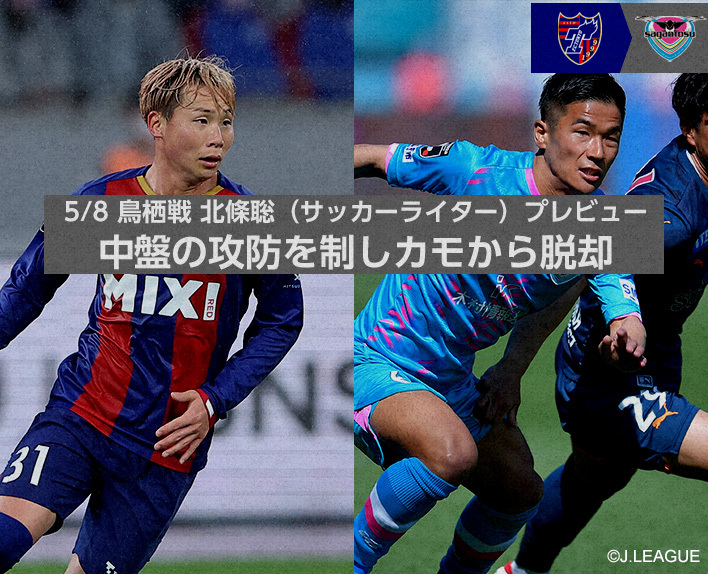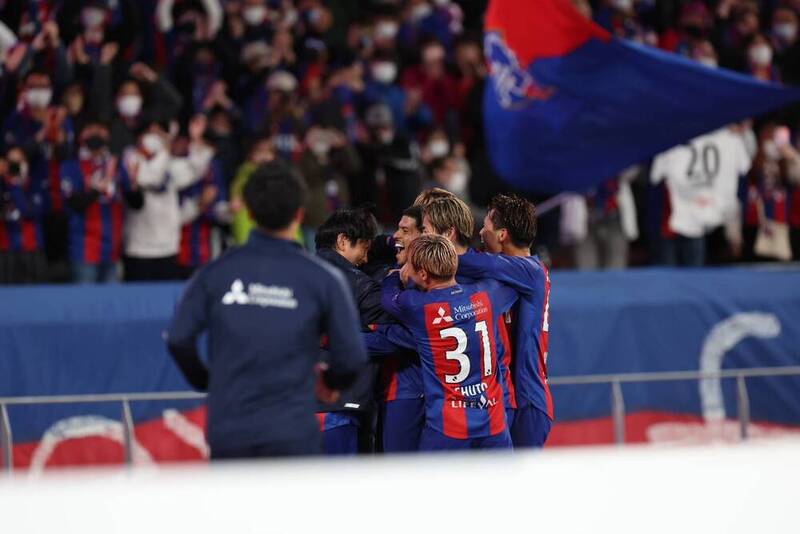Weakness and prey - will that pattern change?
The home team is being tested. FC Tokyo has a great difficulty against Sagan Tosu.
After all, they are on a five-game losing streak in the league. They haven't won since October 2019, before the COVID-19 pandemic. During that time, the team was led by former coach Myung Hwi KIM. This season is different. Under the new coach Kenta KAWAI, they are aiming for a fresh start, and the lineup of key players has changed significantly.

However, it is. The new Saga is still a dangerous opponent.
Regardless of offense or defense, the bold yet meticulous style of play is reminiscent of the previous era. Coupled with running ability, one can even see signs of evolution. The numbers make it clear. At the end of Sec. 9, the average distance covered per match (125.1 km) and the number of sprints (226) are both in first place.
[Source] From the J.League Official Website
Of course, the positional play introduced during the era of former coach Kin is also continued. Each player changes their position while observing the movements of the defense, quickly advancing the ball. The high average ball possession rate per match reflects this, with 54.3% (as of the end of the 9th round), ranking fourth overall. This is despite the fact that many key players from last season have left.
Coach Kawai is a bright rising star in modern football, despite being a first-time challenger in the J1 League. Not only did he lead Ehime FC (then J2), but he also played a significant role in implementing positional play at Montedio Yamagata (J2) where he served as a coach. Additionally, there were no oversights in strengthening the team.

It is symbolic that Akito FUKUTA and Naoyuki FUJITA have been acquired. Or should we say, "returning to their former club"? The former has experience in positional play under a coach with Spanish roots while at Albirex Niigata, and the latter has had the same experience during his time at Cerezo Osaka. Moreover, the coach from whom FUKUTA received guidance is Albert PUIG ORTONEDA, who is leading Tokyo this season. FUKUTA is now the new "brain" of the revitalized Sagan.

How will Tokyo fare against their unchanged nemesis? In contrast to Tosu, they have completely revamped their game model. The banner raised by coach Albert PUIG ORTONEDA is position & possession. The greater the difference from the traditional approach, the more the dynamics of the battle can change. One could say that this is where Tokyo's chance of victory lies. The question is how much they have changed.
The primary focus will be on the build-up.
We are currently in a process of transformation. The quality varies from match to match. Tosu's press is meticulous and powerful. The challenge is how to avoid it and penetrate the opponent's territory. There are both expectations and anxieties.
When Tosu goes on the defensive, they apply relentless pressure from the front. Moreover, during high pressing, it is almost man-to-man. They catch every player left open on the ball side, making it difficult for the opponent to create an easy exit. They force the opponent to kick long balls, recover possession, and transition back to attack.
The basic formation is 3-4-2-1, but it can change flexibly depending on the opponent. We take positions that are easy to press from the front. Since Tokyo's formation is 4-3-3, in defensive situations it becomes 3-4-1-2. This structure is similar to that of Hokkaido Consadole Sapporo, which we faced in Sec. 9.

Moreover, the transition between offense and defense is quick, and the movements to mark players are also swift. Even if the attacking side changes their positions intricately, the players from Tosu follow them closely. Naturally, it becomes difficult to create an unmarked player. This is one reason why Tokyo struggled with build-up play in the match against Sapporo.D.
There are two main ways to break through. One is to increase the tempo (speed) of the passing work and release the ball before being marked by the opponent. The other is to utilize space rather than focusing on individuals (receivers). The target is behind the last line—sending both players and the ball there to quickly overturn the opponents who are coming forward.
So far, Tokyo has often used the latter (the second option). Center-back Masato MORISHIGE and Yasuki KIMOTO have sent long passes behind the line, which often leads to chances. However, good passes do not always connect. When the opponent's press is strong, there is little room to aim, and the focus shifts more towards escaping the danger zone.
In that case, the key is the first option. How to increase the tempo of the passing work and find an exit. Particularly important are the contributions of the midfield trio, Takuya AOKI, Shuto ABE, and Kuryu MATSUKI. They are required to engage in the build-up while being closely marked by the opponent and advance the ball. In other words, it is about developing attacking routes in the center. The more opportunities there are, the more the flow of the game will tilt towards Tokyo.

Fortunately, there is also experience. Including Sapporo mentioned earlier, we have faced strong pressing teams such as Sanfrecce Hiroshima and SANGA S. How will we utilize that? At the very least, we should not be overwhelmed by the intensity -- or so it should be.
And the second focus is how to contain Tosu's possession. For the Tokyo players, the transition between offense and defense, challenges for the ball, and battles for second balls are what they desire. While there is room for improvement in efficiently 'trapping' from the front, the intensity itself is extremely high. In that regard, it might rather be Tokyo's 'unchanging' strength.
Incidentally, the reason for Kyoto's victory, which was the first to defeat the unbeaten Tosu since the opening match, was the combination of switching, ball contests, and second balls. From the kickoff, they applied high-intensity offense and defense to disrupt Tosu's momentum, achieving a convincing 3-1 victory. In a sense, defeating a nemesis requires both a "changed strength" and an "unchanged strength" that are different from before.
By the way, there is a strange commonality between Tokyo and Tosu. Looking at the numbers at the end of Round 9, Tokyo has scored 8 goals and conceded 5. On the other hand, Tosu has scored 9 goals and conceded 5. It seems like a team that defends solidly and takes advantage of few opportunities.
Of course, the reality is different. The reason for Tosu's low scoring is not due to a lack of opportunities, but rather a significant issue with their ability to capitalize on those chances. On the other hand, in Tokyo's case, there are few opportunities to begin with, and they are not fully utilizing the attacking prowess of their players. In fact, as of the end of the 9th round, Tokyo's average number of shots per game is the second lowest. They are also still in the process of figuring out how to break down the opponent's defense after moving the ball into the attacking zone.
Given these circumstances, it may be a low-scoring contest. Naturally, set pieces could also be one of the factors that determine the outcome. However, the main highlight will undoubtedly be the clash of each team's strengths. Which team will be able to evade the opponent's fierce press and create numerous opportunities to finish?

The team that gains the upper hand in the midfield battle will likely come closer to victory. From Tokyo, Aoki, Abe, Matsuki, and from Tosu, Fukuda, Fujita, Kei Koizumi -- we can't take our eyes off their fierce competition. From the Tokyo side, expectations for high school graduate Matsuki are growing significantly. After all, like veteran Yuto NAGATOMO, he is untainted by the bitter memory of five consecutive losses. His ability to move brilliantly in both offense and defense should also become a new strength for Tokyo.
Will the nemesis be defeated? The answer will be revealed soon.
Text by Satoshi Hojo (Football Writer)








